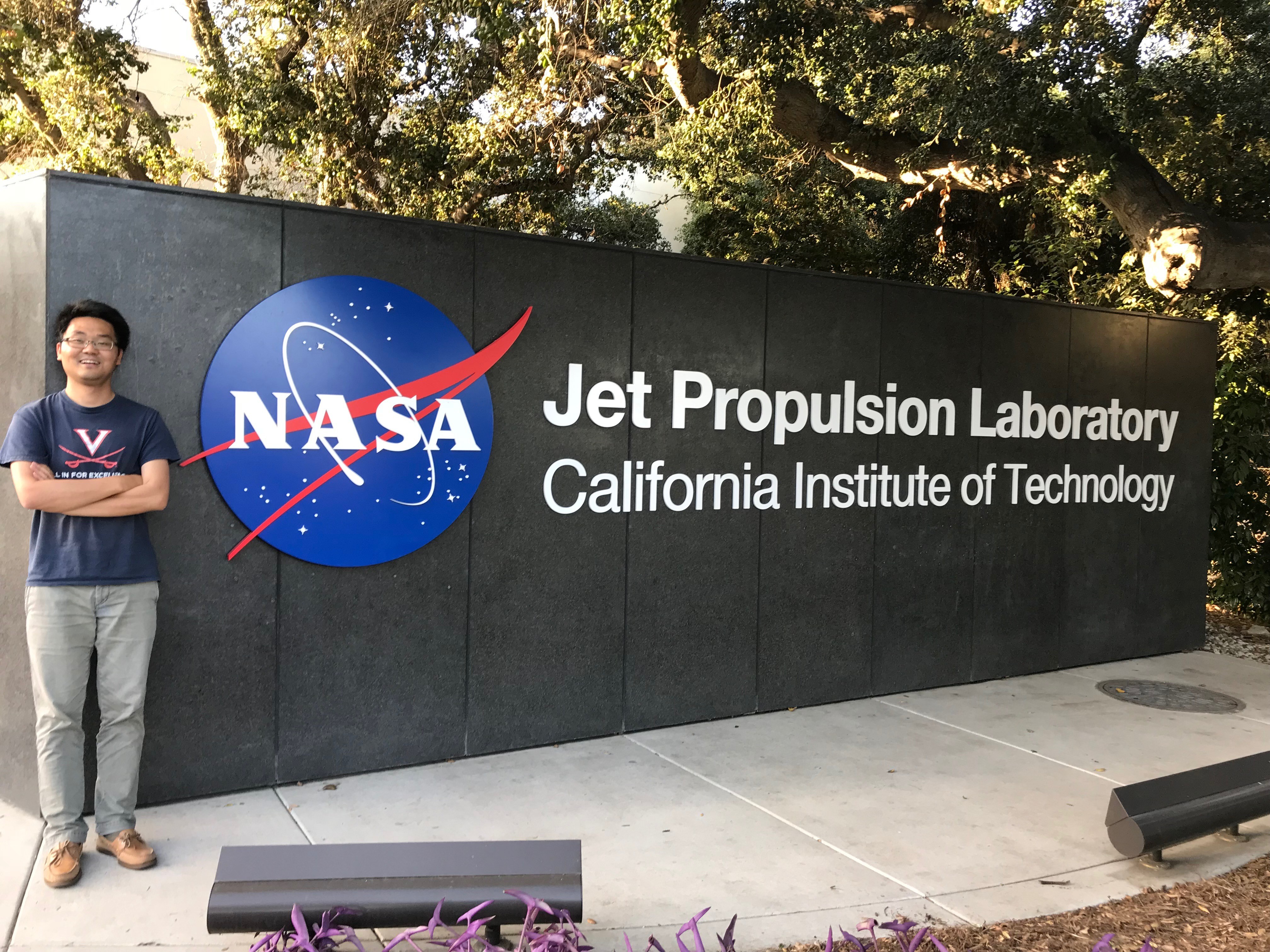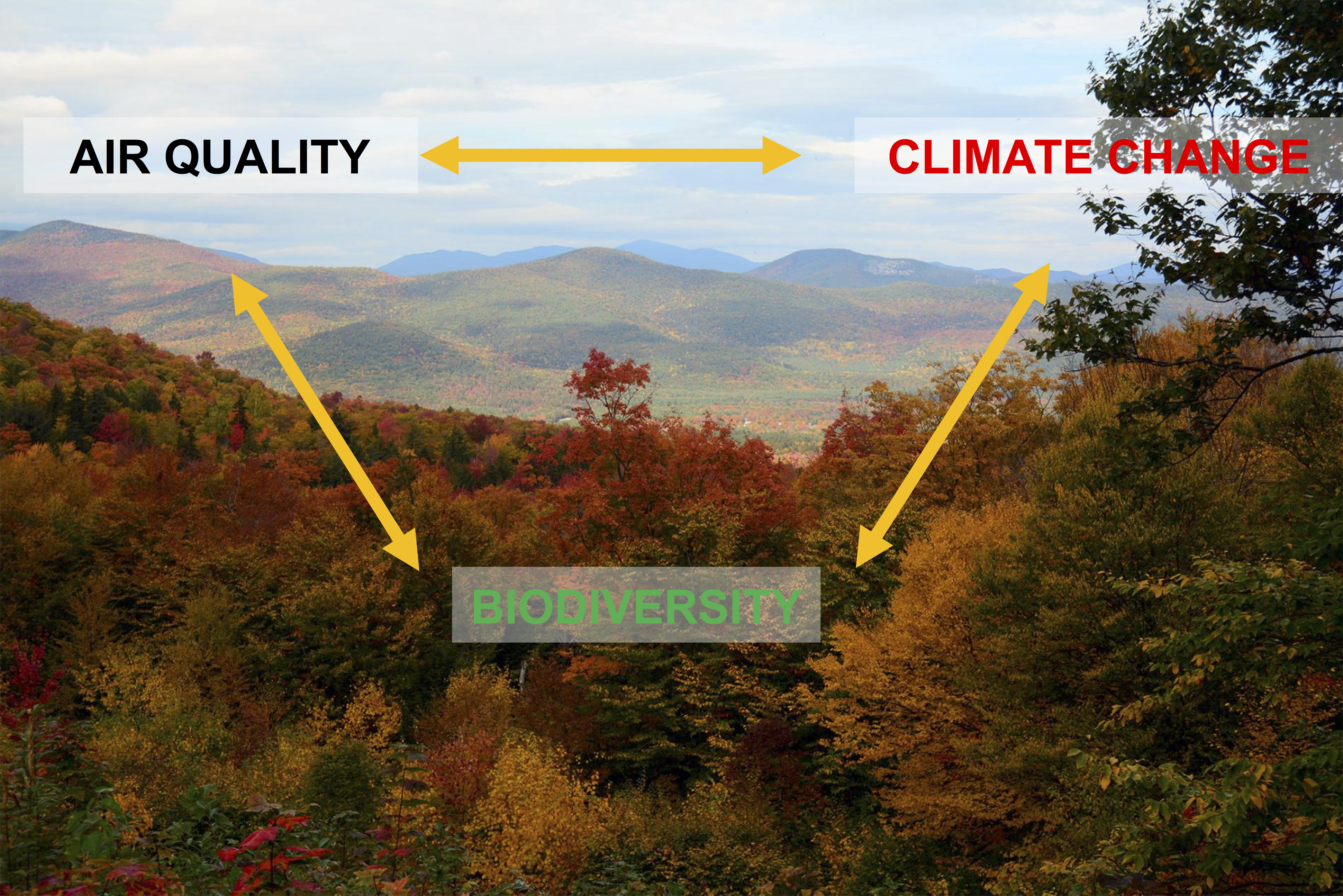Under a mission of ecosystem and biosphere stewardship to enhance their resilience, I envision an integrative ecology to construct a theory of ecosystem dynamics of a cross-scale, interdisciplinary nature using interwoven data- and theory-driven approaches—give Ecosystem Ecology the meaning as its name suggests: elucidating the relationship between composition and functioning underlying ecosystem dynamics.
After a postdoc at UC Irvine working on microbiome model development and application–DEMENTpy, I am now at Oak Ridge National Lab working on root and mycorrhizal fungi (the last and only major component in ecosystems that I haven’t touched on) to achieve the vision.

[Photo shot at the entrance of JPL, Pasadena, CA on June 9th, 2018]
In 2010 i got my bachelor degree in Agronomy from Shandong Agricultural University, located right at the foot of one of the most famous mountains in China, Mount Tai. With a ‘naive’ but clever idea of no test on mathematics, i made the decision to enter the graduate program that determined my research field of lifetime–Ecology(see I remain lived up to my dream). In 2013, i finished my training in biogeochemistry as a master student at Institute of Botany, Chinese Academy of Sciences. Four years later in 2017, I earned my PhD degree in Environmental Science from University of Virginia (located in the beautiful college town–Charlottesville) under the supervision by Prof. Manuel T. Lerdau and Prof. Herman (Hank) H. Shugart, two great scientists and mentors.
NOW I am broadly interested in Biosphere-Atmosphere Interactions (BAIs) in the Earth System. Being amazed by how the Earth system was born, develop, and evolve, my current research ismostly focusing on Atmospheric Composition-Climate Change feedbacks mediated by the Biosphere. Studying these interactions is quite inter-disciplinary, which involve ecophysiology of plants and microbes, community and ecosystem ecology, and biogeochemistry, as well as a little bit atmospheric chemistry. Answers to the questions are obtained with a variety of methods including, but not limited to, field observation, experiment, remote sensing, modelling, data mining (which i now dub a methodological framework of interwoven theory- and data-driven approaches). The following unbelievably sketchy picture made years ago sort of tells what I am doing:

Research Highlights:
Integrative Ecosystem Theory
I am actively thinking and developing an integrative theory of ecosystem dynamics and functioning by synthesizing the works below on sub-systems of ecosystems spanning forest, soil, and microbiome across scales.
Forest System
I developed the 1st individual-based forest volatile organic compounds emission model–UVAFME-VOC (v1.0, written in Fortran 90). Luckily, this paper won the Best Young Researcher Paper Award of International Society of Ecological Modelling. Two example applications of this model to addressing air pollution and climate change impacts on forest ecosystems have been published:
—-> Results that tropospheric ozone may not suppress forest carbon sequestration with explicit incorporation of species diversity with varying sensitivity to ozone and, meanwhile, enhance isoprene emissions from the southeastern US forests are published in Scientific Reports. This paper was featured in SCIENCE NEWS, among a couple of other science media, entitled “Smog may not hurt a forest’s carbon-sucking ability, contrary to conventional wisdom”.
—-> Climate warming, by contrast to the prevailing paradigm of enhancement effects, may not necessarily always enhance forest isoprene emissions because of composition shift. This finding benefits from this individual-based model that can explicitly simulate forest compositional dynamics to the individual level. This paper is published in Ecological Applications.
—-> A review paper on Forest Gap Model and its relative of individual-based model, which can date back to as early as the 1960s is published in Environmental Research Letters.
—-> A Nature Geoscience piece about complexities in interactions between plants and the atmosphere with respect to air quality and climate. https://www.nature.com/articles/s41561-019-0413-8
Soil System
We argue to develop bottom-up aggregate-based models (ABMs) in soil systems by viewing soil aggregates as biogeochemical reactors in a Global Change Biology article.
An opinion paper arguing a widespread production of greenhouse gases in an alternative mechanistic pathway category–nonmicrobial–is published in Global Change Biology.
Soil aggregates are proposed to be viewed as relatively independent biogeochemical reactors in the soil matrix, facilitating the building of bottom-up aggregate-based models. This work is published in Global Change Biology
Emergent properties of organic matter decomposition by soil microbial enzyme are uncovered (published in Soil Biology and Biochemistry).
Microbial System
The project I’m working on actively is on disentangling the relative roles of environment(drought, temperature, and substrates) vs microbial community in regulating litter decomposition using DEMENTpy (v1.0), a spatially explicit trait- and individual-based microbial model that i developed based on its predecessor DEMENT. A couple of works applying this model to addressing microbiomes’ composition-functioning relationships are published or underway:
I argue for a unifying community trait-mediated tradeoff framework of predicting organic matter decomposition across scales in this very recent piece just accepted by Frontiers in Ecology and Evolution. Get a sneak peak here: GitHub Repo
Bin Wang*, Steven D. Allison. Trait-based Tradeoffs Mediating Drought Legacies in Soil Microbiomes. Ecosphere [GitHub Repo] This piece proposed and theoretically proved that tradeoffs mediated by traits of enzyme production and drought tolerance can explain various drought legacy scenarios in microbiomes
Emergent properties of organic matter decomposition by soil microbial enzyme are uncovered (published in Soil Biology and Biochemistry). Get a sneak peek into the results at: https://github.com/bioatmosphere/An_emergent_soil_enzyme_decomposition_model
Root System
Answering an overarching question of how to better represent roots in Earth System Models(ESMs). This issue is a classic problem in terrestrial ecosystem building that has been consistent across the components of ecosystems from trees (e.g., Wang et al. 2016,2017,2018,2019) to microbes (e.g., Wang and Alllison 2019 SBB,2021 Ecosphere,2022 Frontiers in Ecology and Evolution) to soils (Wang et al. 2019a,b Global Change Biology).
TAM: we propose this TAM framework to tame fine-root systems complexity across scales. See GitHub and Global Change Biology.
Global Take
By compiling independent studies of GHGs fluxes in response to ozone elevation from around the world across forest, grassland, and cropland systems, in combination with global vegetation productivity data I did a preliminary assessment of sensitivity of global GHGs budget to ozone elevation using meta-analysis.
-> We find that ozone elevation would weaken terrestrial carbon sink, transforming the terrestrial biosphere from a C sink to a source if O3 concentration continuously increases, though the suppressed CH4 and N2O emissions can offset a tiny portion of enhanced CO2 emissions.
-> This work is published in Environmental Research Letters, and featured in environmentalresearchweb entitled ‘ How does tropospheric O3 affect the budget of greenhouse gases ?”
This work has been referenced among others in: the IPCC Special Report on 1.5. and the Wikipedia page, Global Warming:https://en.wikipedia.org/?curid=5042951
—————————————–
Contact:
Bin Wang, Oak Ridge National Lab, Oak Ridge, Tennessee. wbwenwu at gmail.com/ wangb at ornl.gov
